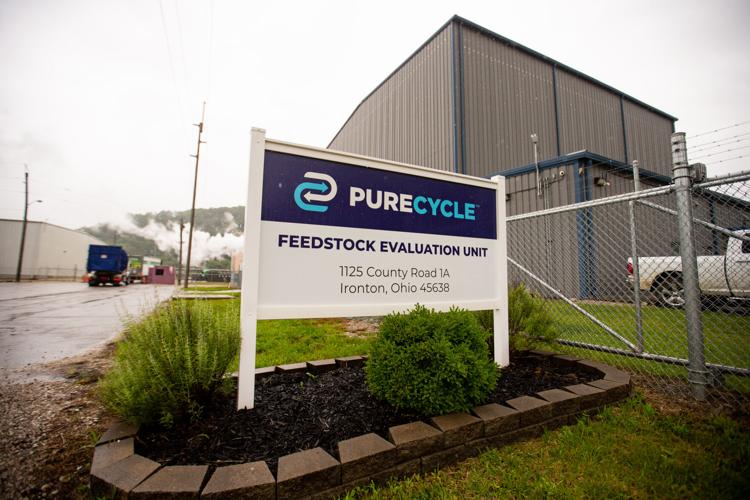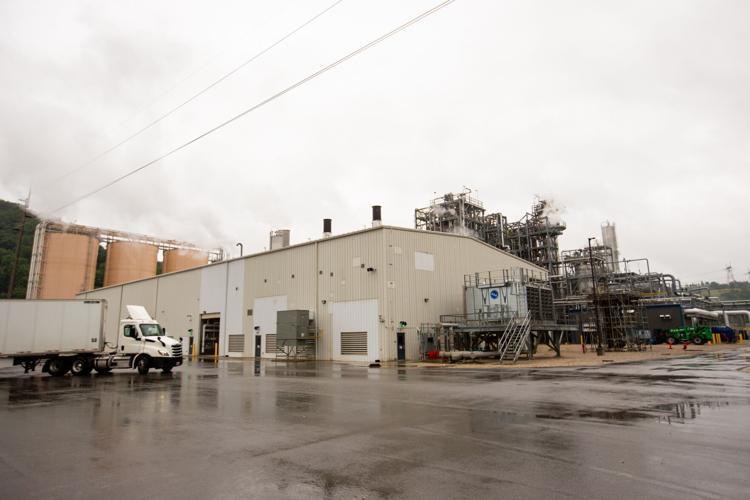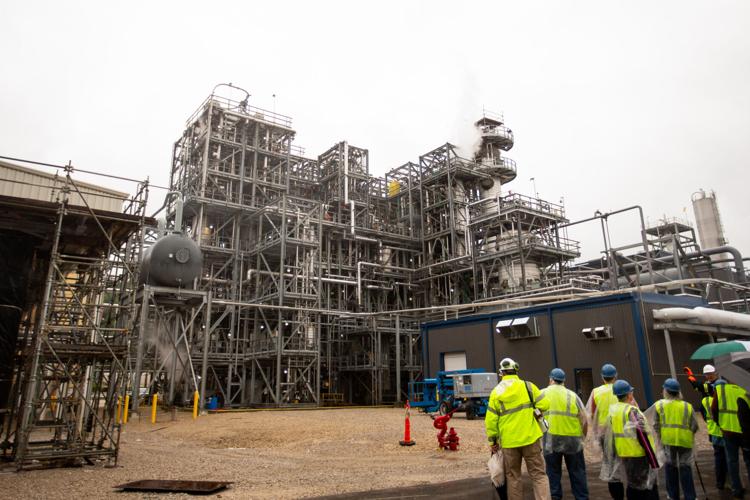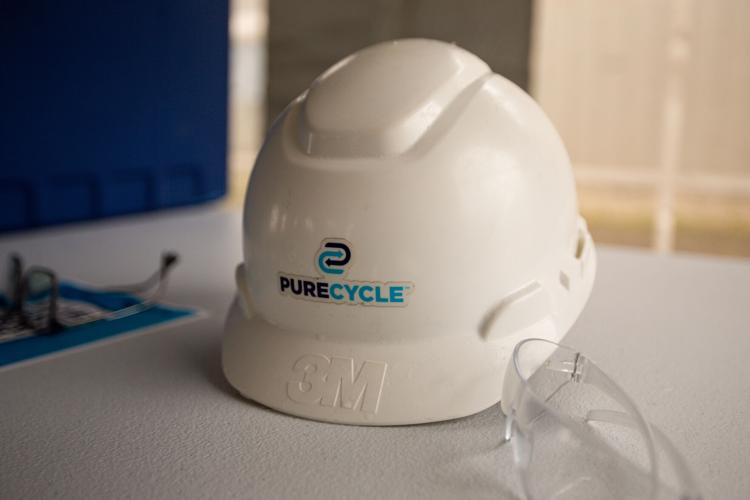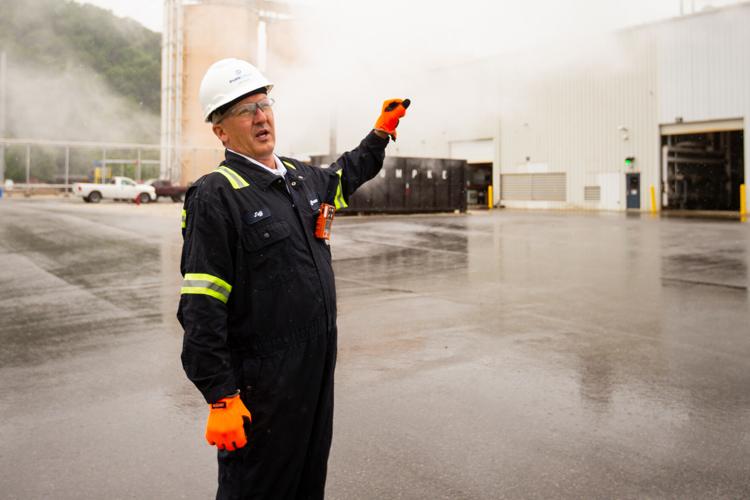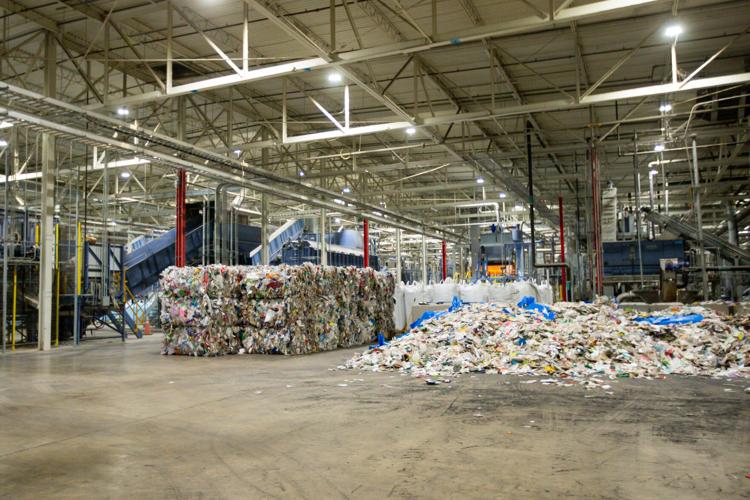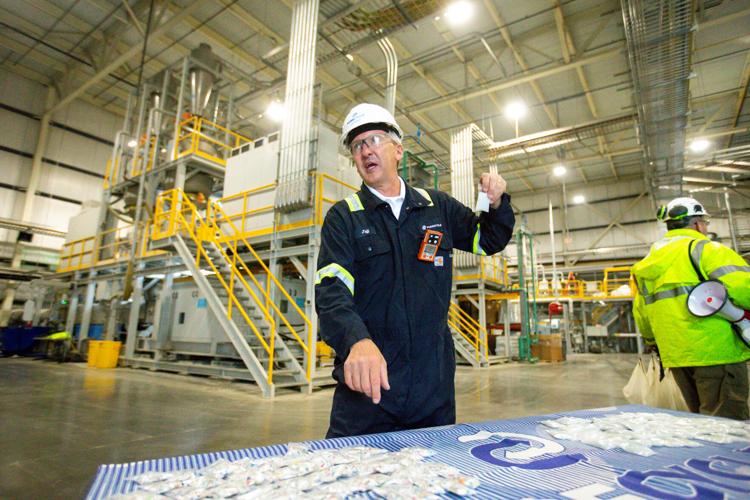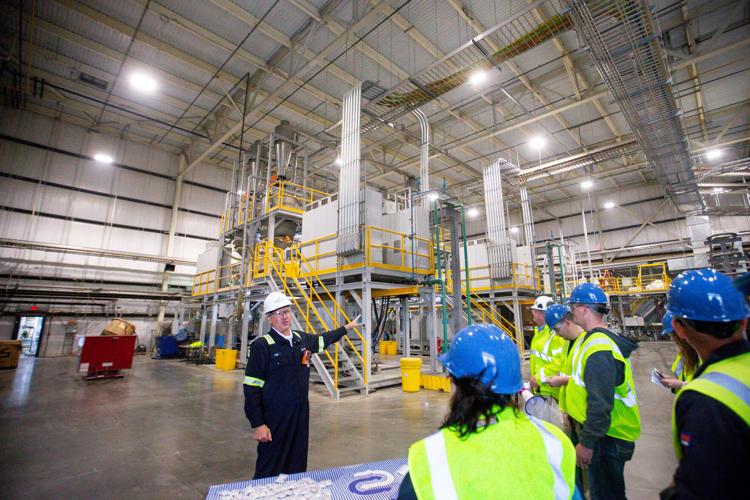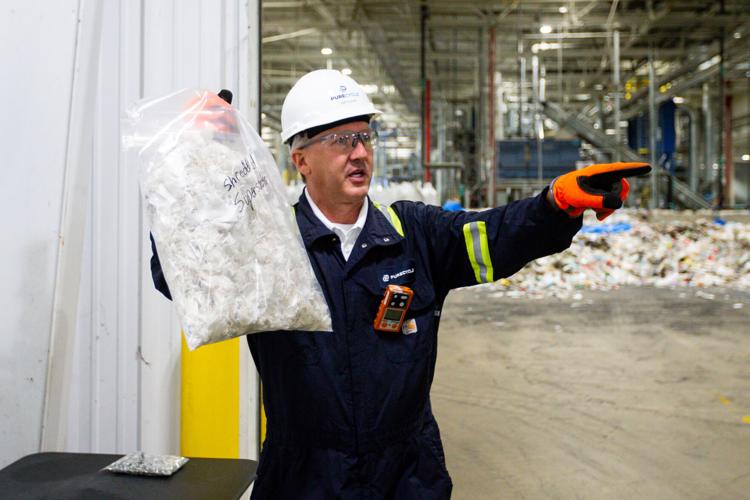Editor's note: This story was updated Monday, June 16, to correct the category of recycling process PureCycle Technologies uses.
IRONTON ����ֱ��� Operating since June 2023, PureCycle Technologies in Ironton is the only facility in the world that can turn post-consumer polypropylene back into Ultra-Pure Recycled resin with virgin-like properties by removing impurities like dyes and odors.
It recently welcomed community members and media for a tour of its operations.
Visible from U.S. 52 near the Lawrence/Scioto county line, the polypropylene purification facility uses patented technology to recycle polypropylene, or plastic 5. The technology was developed and licensed by Procter & Gamble and commercialized by PureCycle, a corporation headquartered in Orlando, Florida.
Polypropylene is used for food packaging and automotive parts ����ֱ��� Starbucks cups for cold drinks and most yogurt containers are two common examples.
While there are other plastic recycling facilities, this process, known as dissolution, is unique because of the quality it produces. Usually polypropylene can only be recycled two to four times before it degrades to the point where it����ֱ���s no longer usable.
There are two main categories of plastic recycling processes: physical and chemical. Mechanical recyclers melt the washed and shredded plastic and the process stops there. Chemical recyclers break it down to a monomer and then build back up into other materials.
is a physical process where the polymer is dissolved in a solvent and purified through a series of steps. It����ֱ���s like a molecular washing machine where the T-shirt goes in, gets washed, and then comes out as the same T-shirt, but cleaner, PureCycle team members explained.
PureCycle����ֱ���s process does not fall under chemical recycling since it uses dissolution technology and maintains the structure of the polymer.
����ֱ���We����ֱ���re not changing the form of the polypropylene; we����ֱ���re just cleaning it. We����ֱ���re cleaning the inside of the plastic,����ֱ��� said Jeff Kramer, U.S. operations manager.
PureCycle has a sorting facility in Denver, Pennsylvania. It purchases bales of plastic from material recovery facilities and other sellers all over the United States.
They are sorted into bales of plastic with a polypropylene percentage of more than 90%. Most waste-haulers and recovery facilities that are selling bales typically only get that percentage to somewhere in the 40-70% range. Having a higher percentage bale to run in Ironton allows for greater efficiencies at the purification facility.
The Denver location was chosen to easily source material from some of the largest population centers within a few hundred miles.
The non-polypropylene materials that are separated from incoming feedstock bales are repackaged according to the specific material and then sold to other recyclers interested in those materials.
The Denver site does not collect plastic directly from the local West Virginia, Ohio, Kentucky area. There are currently no plans to install a local plastic collection for PureCycle.
Locals who have curbside recycling pickup, those items probably go to Rumpke. Ashland has its own sorting facility. Regardless, those plastics likely do not make their way to PureCycle and are not recycled with dissolution.
The Ironton facility receives 10 to 12 trucks each day with 40,000 pounds of polypropylene per truck when fully operational. Raw plastic usually smells very pungent because of food waste.
Kramer said it would be helpful if more people washed their recyclables before putting them in the bin, but it is not essential because all the product is washed first anyway.
The company broke ground on a second polypropylene purification facility in Augusta, Georgia, in March 2022. It will be able to support up to eight purification lines. The Ironton facility has one purification line. Kramer said the new facility will also likely accept plastic from Denver.
The raw plastic is washed and shredded into bits that are blown out through pipes into four large silos, easily seen from the highway. It then enters the purification process, which looks like a giant metal jungle gym.
As described on the , the first step is melting and filtering the flakes. The polypropylene plastic feedstocks are melted down in the polymer extruder. The polymer then moves to the polymer filter, where large contaminants and large non-melt materials are filtered out of the feedstock.
During step two ����ֱ��� extraction ����ֱ��� fresh solvent pulls out color and odor from the contaminated plastic. In step three, the polyethylene/solids settler allows contaminations and other plastics, also known as insoluble solids and polymers, to settle out of the process. The polypropylene solution is further polished through contact with a solid, media-packed column in step four.
In step five, the purified polypropylene is separated from the solvent in a product decanter. The solvent is recovered and reused in the process, eliminating solvent waste.
In the final step, the polypropylene feeds into the final product extruder. The product is then cut into pellets and dried before it moves on to quality control, packaging and resale.
����ֱ���We����ֱ���re working with a variety of customers right now to establish consistent sales of those materials,����ֱ��� Kramer said.
The company is in the midst of more than 30 trials with companies across various industries that are interested in using PureFive resin, team members said in an email. This ranges from packaging to automotive to the fiber and textile industries. A few of the companies purchasing products from PureCycle include Beverly Textile Manufacturing, Churchill Container, Milliken, and Drake Extrusion Inc.
The whole process also uses less energy and has a lower carbon footprint than virgin plastic production.
Using pre-production modeling data from the commercial facility design, a 2021 third-party life cycle analysis (LCA) by Boundless Impact found that PureCycle����ֱ���s production process may reduce greenhouse gas (GHG) emissions by as much as 35% and utilize approximately 20% of the energy compared to fossil-fuel derived polypropylene. Based on PureCycle����ֱ���s own internal estimates, the numbers could be even better. The company is currently in the process of completing a third-party LCA based on actual data from running the Ironton Facility.
The Ironton facility has about 75 full-time employees and 10 to 15 routine contract workers on site.
The 100,000-square-foot building where plastic is brought in, washed and shredded, was restored. It is original to the Dow Chemical plant that closed in 2016.
����ֱ���This building needed a lot of help, but it felt good bringing it back to life. And it felt good to the locals. We had employees that have worked at Dow Chemical, and it felt good to them to see these buildings come back to life,����ֱ��� Kramer said.
The facility has an on-site wastewater treatment process that allows PureCycle to meet all discharge limits in its state-issued permit before sending wastewater to the Scioto County wastewater treatment facility. The dissolution process uses a similar amount of water to what is needed to produce virgin polypropylene, team members said in an email.
For the everyday person, consumers should leave the when recycling. Washing to remove food is helpful but not essential.

